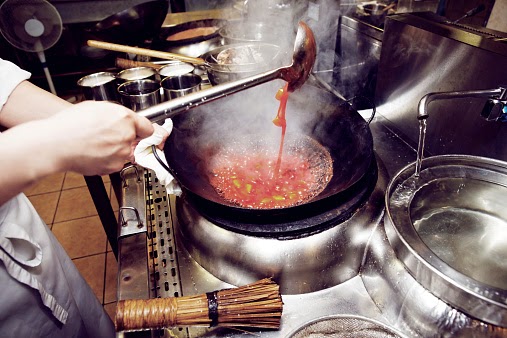
Ensuring that a menu-item is gluten-free starts with getting the right ingredients.
Here are some tips for identifying and sourcing
gluten-free items.
Check the label. All packaged foods
labeled gluten-free must meet the requirements of the Food and Drug
Administration’s gluten-free labeling final rule as of Aug. 5, 2014. The final rule
establishes a standard definition of gluten-free to help consumers with celiac
disease avoid gluten.
“The FDA has finally drawn a line about what it means to
say an item is gluten-free,” says Betsy Craig, CEO of MenuTrinfo, a Fort Collins, Co.-based
consultancy that provides gluten-free training and certification to
restaurants. “This definition will take away some of the guesswork of selecting
safe products.”
The rule also requires packaged foods with the claims “no
gluten,” “free of gluten” and “without gluten” to meet the definition for
“gluten-free.” (Note that products labeled prior to Aug. 5, 2014, weren’t
required to comply with the rule.)
Some manufacturers also certify their products as
gluten-free through organizations such as the Gluten-Free Certification
Program, the Gluten-Free Certification Organization or Quality Assurance
International/NSF International. All require certified products to have less
than 10 parts per million of gluten, and the Celiac Support Association
requires less than 5 ppm. The FDA’s gluten-free labeling rule sets the
threshold at 20 ppm.
“Third-party verification shows that the manufacturer went
the extra mile to provide a truly gluten-free product,” Craig says.
Request gluten-free verification. Checking labels is a
great first step, but you’ll often need to look beyond that. Just because the
label doesn’t specify the item is gluten-free doesn’t mean it isn’t. In fact,
many items are inherently gluten-free, like produce and meat, but aren’t
labeled so. Gluten-free labeling is voluntary, according to the FDA’s gluten-free labeling final rule.
Manufacturers also don’t have to indicate whether an item
contains gluten, a protein found in wheat, barley and rye. The Food Allergy Labeling Consumer Protection Act requires
only wheat be identified because it’s a common allergen.
“If you’re just looking for wheat in an allergen
statement or as an ingredient on a label, you’re potentially missing
hidden sources of gluten, most likely derived from barley,” says Beckee
Moreland, director of the Gluten-Free
Resource Education and Awareness Training Kitchens program of the National Foundation for Celiac
Awareness.
The safest approach is to ask your supplier to verify an
item is gluten-free because many gluten sources aren’t readily identified in
the ingredient list. Beware of vague ingredient descriptions like “flavorings.”
“When in doubt, it’s always best to contact the
manufacturer or vendor to get more information,” dietitian Rezende says. Request
a written statement that verifies ingredients are gluten-free, or ask for a
certificate of analysis, she recommends. Restaurants that need help tracking
and monitoring this information can contract with companies like Healthy Dining or MenuTrinfo.
Partner with your
suppliers. Make sure your
distributors understand your commitment to offering gluten-free dishes, so they
can help identify appropriate products. “There are so many gluten-free options
available today that vendors can help you swap out items easily,” Rezende says.
She cites gluten-free salad dressings and marinades as examples.
Ask to be informed whenever a product is modified, and
request written reconfirmation at least quarterly, Rezende recommends. Those
updates are essential not just for gluten identification but also for nutrition
information and allergen concerns. “For the safety of your customers, you need
to make sure that all the information you’re providing on site and on your
website is up to date,” she says.
Limit substitutions. Although one brand of soy
sauce might be gluten-free, that doesn’t mean another is. Problems can occur
when a distributor temporarily runs out of the carefully selected gluten-free
sauce and makes a last-minute substitution to a non-gluten-free brand. “We
recommend that operators request that no substitutions be made without notice,”
says the NFCA’s Moreland.
Institute proper
receiving protocols. Empower your receiving
employees to take their work seriously. If they mistakenly accept an incorrect
product, it could potentially endanger your guests’ health. “Those who receive
shipments should be educated to recognize gluten-free products and
ingredients,” says Moreland.
Establish and adhere to receiving procedures that prevent
gluten-containing ingredients and allergens from making their way into dishes.
“Closely monitor what you order versus what you receive,” recommends David
Crownover, product manager for the National Restaurant Association’s ServSafe
Allergens training
course. “Checking your products and packing slips closely is not only a good
safety measure, but it’s also a good business practice.”
The National Restaurant Association's Manage My Restaurant has articles in categories such as Marketing and Sales, Workforce Engagement, Food and Nutrition and Operations. Visit Manage My Restaurant here for this and other helpful tips.

.jpg)















